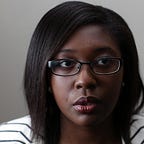Eating the Future
By Tafi Mukunyadzi
Inside a modern space in Paris, a bar, restaurant and laboratory become strange bedfellows resulting in products that look and sound as if they have come straight out of an episode of The Jetsons.
Harvard professor, David Edwards, has taken visions of food innovation, and created the WikiPearl, AeroLife, oNotes. These are the names of his futuristic food reality.
If you walk into any grocery store or restaurant, the chances of you finding vegetarian, vegan, dairy-free, and gluten-free options are high. People are demanding to know more about the food they eat, and they prefer their food to be natural. However, while some in the food industry try to use food that hasn’t strayed too far from its source and is untainted as possible, some, like Professor Edwards, are focusing on stretching the limits of what we consume.
Edwards devised a way to make food products such as ice cream, cheese, yogurt, fruits and vegetables that are edible and do not require a package to hold it together. The food that Edwards’ team creates is shaped into spheres with the main component, what is called the “heart” encased in an edible “skin.” Together, the skin and the heart, form a golfball-sized globule that is called a WikiPearl. The hand that you see in the background is holding three WikiPearls. The red outer skin is edible, and flavored, just like the heart it holds.
There are thousands of skin/heart pairings. The woman in the background could be holding a strawberry skin with vanilla ice cream WikiPearl like the one that I tried. While the ice cream inside was the flavor and consistency that I expected, the strawberry skin was far more interesting. The chewy texture that never melted obviously was strawberry in taste. Unfortunately, the taste was never as intense as the vibrant color suggested it would be. Perhaps the other combinations that are sold in certain Whole Foods grocery stores in Massachusetts would pass a discerning taste test..
For those who don’t always want to chew to get their daily nutrition, there’s AeroLife-an air-based system that allows you to inhale and swallow powdered vitamins and flavors from a portable tube that looks like a futuristic inhaler.
Perhaps you just want to share the aromas of food. You can do that using oNotes, which is essentially scent-based mobile messaging. Currently, you can download oSnapp, an app, onto your iPhone to send messages associated with fragrances and actually inhale the scent through what Edwards calls the oPhone.
At Le Laboratoire, food scientists have taken nourishment and sensory experiences and reformulated down to fundamentals. It seems that these products are only for patrons who like their cuisine with a side of futuristic science and sustainability, but Edwards and his team of thinkers want their products to be used by the general population for more than just a meal.
WikiPearls (edible packaging) was not created to be a novelty item but rather a way to reduce food and packaging waste. According to the Environmental Protection Agency (EPA), Americans generated approximately 251 million tons of trash, but only recycled about 87 million tons of that trash in 2012. Of that total amount of trash, 27 percent was attributed to paper and paperboard and 12.7 percent was attributed to plastics- two materials commonly used for packaging.
The professor and his team are certainly not the only ones, or the first, to bring sustenance and science together. Rodrigo Garcia Gonzalez, Pierre Paslier, and Guillame Couche, students at the Imperial College London, created an edible water bottle that they call “Ooho!” The water bottle is created by a technique known as spherification. Water is encased in an edible membrane of algae and calcium chloride that can be punctured to allow a person to drink directly from the sphere.
The technique used to produce the container, which looks like a ball of gel, was created by legendary chef, Ferran Adria. Adria is credited with revolutionizing and popularizing molecular gastronomy, the science of cooking and manipulating food. While all cooking is technically molecular gastronomy, Adria has elevated the transfomation of food into an artform.
At his famed, but now closed, restaurant El Bulli, Adria dazzled customers with transformed food. His work is considered so important that he had a temporary exhibit at the Museum of Science in Boston, and features in Harvard’s Science and Cooking Lecture series.
In his quest to bring sustainable and interesting food to the masses, David Edwards has shuttered Le Laboratoire so he can open Cafe Artscience in Cambridge, Mass this fall. To make sure the food goes beyond the novel, Edwards has created a team that includes notable figures in Boston’s food scene: Patrick Campbell, Tom Mastricola and Todd Maul.
In a city where innovation and startups are common, perhaps edible pearls of food and vaporized messages won’t seem so out of place.
